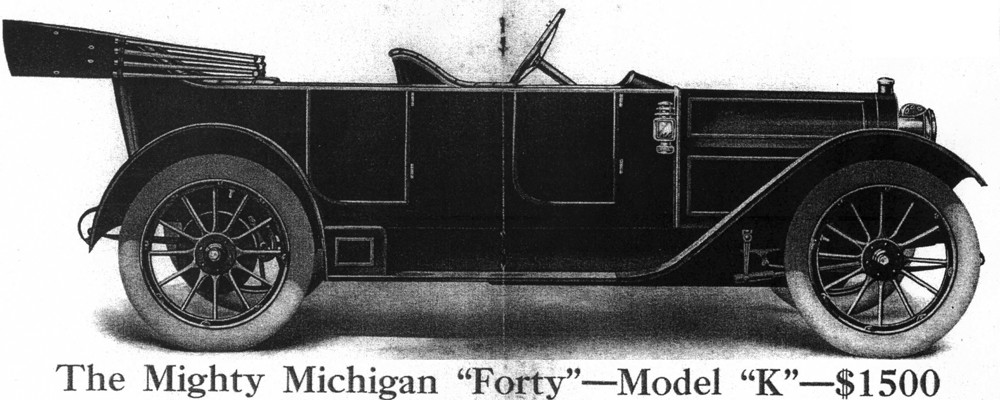The clutch on the Michigan is called a “leather cone clutch”. This type of clutch was used on many early cars that had 3 and 4 speed manual transmissions (there were no automatic transmissions in 1912). To say this clutch mechanism is basic is a bit of an understatement. A tapered leather covered disk is jammed into the back of the flywheel and the drive-train is engaged. Push the clutch pedal down and the disk is moved away from the flywheel. That’s it.
Here is a diagram of how it works. The blue dish thing has a brown band around it (below). The brown band is leather covering an aluminum cone. The leather is lubricated with neats foot oil. Yes, the same stuff you use to soften up your baseball glove. Apparently you just squirt some on and that makes the leather happy and the clutch less “grabby”. I don’t know if that’s true yet, but I look forward to finding out.
 Here is what the clutch looks like outside of the car:
Here is what the clutch looks like outside of the car:
 The little curvy things with the bolt & nut are the springs that go under the leather and can be adjusted with the nut & bolt to bulge the leather outward from the surface of the aluminum clutch disk. There are 6 of these springs. By loosening the nuts, they bulge out more and when the clutch is engaged, these bulged out places contact the flywheel first. I am told this is how you get the clutch to engage gradually rather than suddenly grip — causing a jerky start or shift.
The little curvy things with the bolt & nut are the springs that go under the leather and can be adjusted with the nut & bolt to bulge the leather outward from the surface of the aluminum clutch disk. There are 6 of these springs. By loosening the nuts, they bulge out more and when the clutch is engaged, these bulged out places contact the flywheel first. I am told this is how you get the clutch to engage gradually rather than suddenly grip — causing a jerky start or shift.
In November of 2013, I took the clutch to Bob Knaak, in Orange CA. He’s an expert with leather cone clutches. He fixed the broken spring on our clutch and replaced the cracked bolts with proper notched versions including cotter pins and with drilled nuts. Apparently, the leather was in great shape, so that was not replaced. I then re-installed the clutch into the drive-train.

The spring is STRONG. I had to use a scissor jack to compress it so I could get the nuts on to hold it in place

Here is the clutch re-installed with throw out bearing (that is attached to the pedal shaft) and the two universal joints.
I have a theory about the many universal joints this car has. There are two here and another behind the transmission (the silvery thing to the right in the photo, above). On an assembled car, such as the MICHIGAN, where parts are coming from all different manufacturers, universal joints allowed for considerable misalignment of components in the drive train. My experience is only with this car, but I’ll bet other “assembled cars” did the same thing. With multiple u-joints, you could change wheel-bases, transmissions, engines, frame lengths and make all manner of adaptations without having to be too precise.



